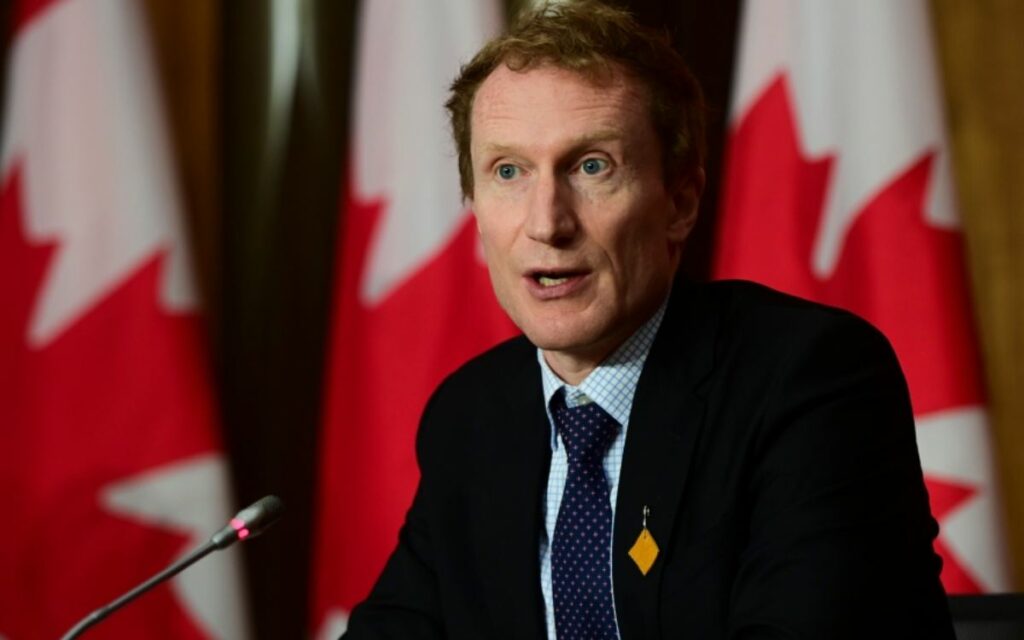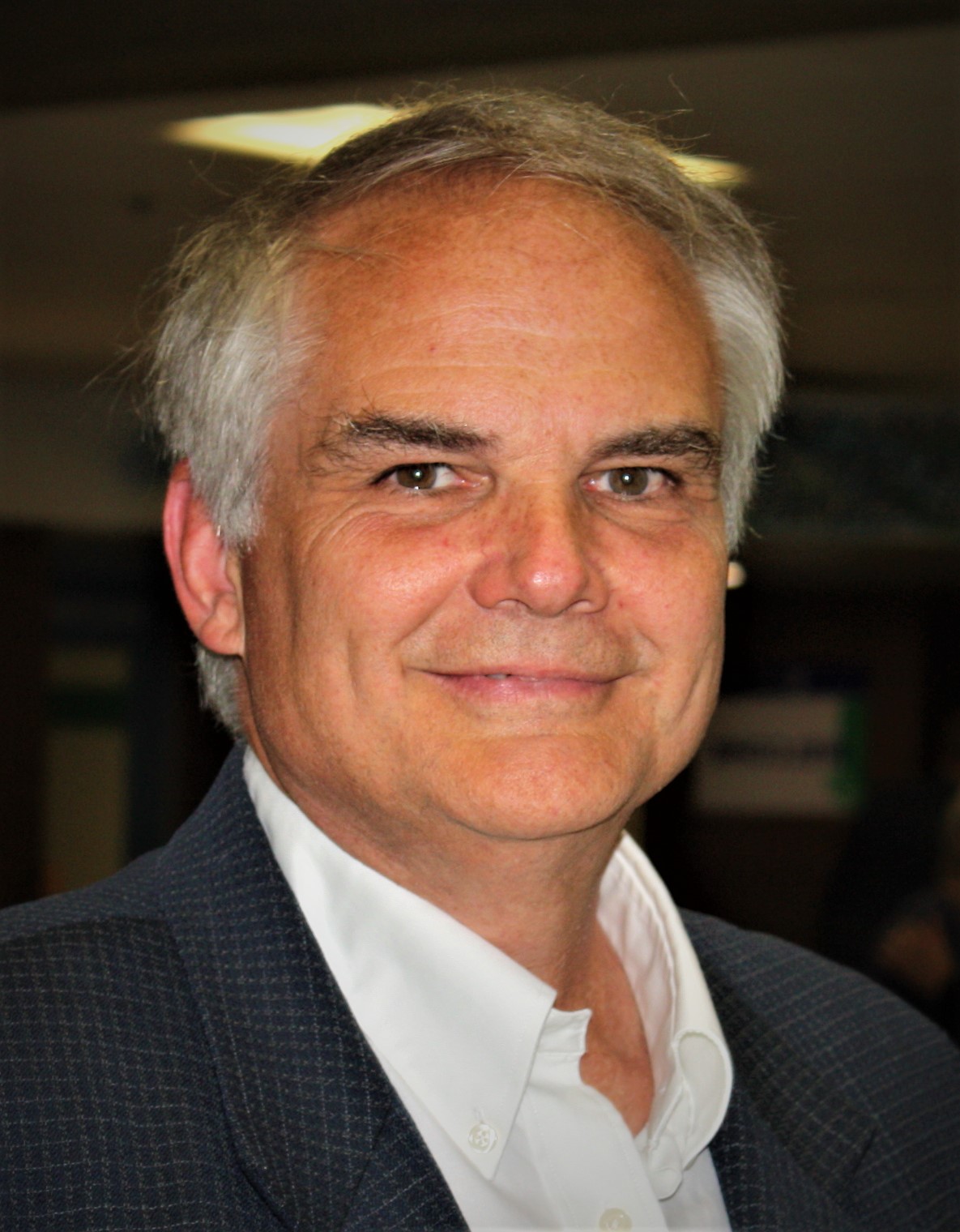
Immigration Minister Marc Miller announces Canada’s new immigration targets, keeping them at a historic high for the next three years. Photo Credit: THE CANADIAN PRESS/Sean Kilpatrick
Immigration Minister Marc Miller was centre stage in Ottawa this week announcing the government’s new immigration targets for the next three years. Miller’s revelation was that the new numbers are the old numbers – in the coming years, they will remain at the country’s current, historic high level.
The government’s planned target is to welcome 485,000 new permanent residents in 2024, 500,000 in 2025 and another 500,000 in 2026. The minister wanted to underline the figure for 2026 as it is slightly less than a previously forecasted increase that would have seen even more than a half million come through “our country’s front door.”
Miller stated the government was “pausing” its annual increase of numbers of permanent resident immigrants in 2026 in order to assess the sustainability of the growing immigration numbers and the impact on housing and the labour market.
Still, in the next three years, Canada will (officially) welcome another one and half million immigrants (under the category of “permanent resident”). (Brackets are required — because this is but half the story.)
Under the Trudeau government, immigration numbers for permanent residency have increased dramatically from under 300,000 in 2015 to the half-million level today. This is changing the composition of the country as recent government statistics from Stats Canada and the department Immigration, Refugees and Citizenship Canada reveal:
- In 2022 Canada’s population grew by a record amount, more than one million-plus people.
- In 2022 the country’s population growth rate was 2.7 per cent, which is the highest rate in the world outside African countries.
- Almost all (98 per cent) of that growth came from net international migration.
- First- and second-generation immigrants now account for 44 per cent of the country’s population, according to the 2021 census.
- On June 16, 2023 Canada’s population surpassed the 40 million mark. On July 1, 2015, Canada’s estimated population was 35,851,800.
- Canada’s population has not grown at the current pace since the baby boom years of the late 1950’s.
In response to the government’s storyline, Campbell Clark of the Globe and Mail was quick to write an opinion piece “Time to address the immigration number that matters now.” Clark states: “Don’t look too closely at the immigration targets the federal government set Wednesday. They’re not the numbers that matter right now…. The figure that matters more is the 2.2 million in temporary residents who are in Canada. That number has surged…”
Indeed, to get a complete picture of who is moving in, Canadians must take into account how many are being let in through the country’s “back doors.” For example, in 2022, the permanent resident figure was 435,000 but a CIBC report claims the actual number of new people was more than 955,000 (and we now know Stats Can pegs the number at more than one million). According to CIBC, non-permanent residency that year could have been greater than 700,000. No final total figure for 2022 has been provided by the government.
So, here follows “the other numbers” to consider when assessing the Trudeau government’s full plans for immigration.
As Campbell Clark instructs, look at the temporary residents, those who were provided visas for work and education. Temporary visa holders accounted for a majority of newcomers (58 per cent) in 2022.
In the 12 months leading up to this year’s Canada Day, four times the number of temporary residents entered Canada than the average number who entered between 2015 and 2019 (Trudeau government’s pre-COVID years). In an August 2023 report, CIBC estimated that “Stats Can had failed to count as many as 750,000 people whose temporary work visas have expired, but who remained in the country awaiting a renewal of their permits, and another 250,000 foreign students who incorrectly identified their place of residence in the 2021 census.”
In other words, the government’s official number of temporary residents may be off by as many as one million people. Still, the government is planning to increase the pace of temporary immigration in the coming years. For example, there is expected to be more than 900,000 international students coming to Canada this year.
And there is more. To add to the “front door” permanent residents and the “back door” temporary residents”, there are those refugees and migrants who make it to Canadian soil to seek asylum. Canadians may never get a true sense of the actual numbers for refugees and migrants. In 2022, the federal government stated nearly 40,000 people crossed over Roxham Road, but reports from agencies and the Quebec government claimed as much as 92,700 asylum seekers had the RCMP carry their bags across our border – that’s more than double the federal government’s official count. Additionally, in 2022 Canada welcomed in refugees from Ukraine (145,000) and Afghanistan (20,000).
Accelerating the flow of people into Canada is aligned with the Trudeau government’s immigration strategy set back in its early years. In 2016, the federal Advisory Council on Economic Growth, which was chaired by Dominic Barton (then-McKinsey & Co. global managing partner and later the Canadian ambassador to China), recommended that there be a 50 per cent increase in annual immigration levels so that in five years (2021) the number would reach 450,000. Barton was also a co-author of a paper advising the government that the country’s population should be 100 million by 2100.
In concert with this counsel, the Trudeau government signed the Global Compact for Migration in early 2017. This global agenda set in place a system for “safe, orderly and regular” migration from 3rd world countries, mostly from the continent of Africa. Today, Canada has the world’s largest intake of 3rd World migration.
Welcoming increased numbers of migrants comes with an untold cost. There is increased pressure placed on social services, housing, and health care to support the migrants. In the 2023 federal budget, there was a $1 billion line item for short-term accommodation and temporary health-care coverage for asylum-seekers and refugees. This line was broken out to provide $530 million for accommodations and $469 million for health benefits. That is $1 billion dollars for this fiscal year.
Here are four additional points to crowd into this review of the Liberals’ immigration plans.
- Miller says we need more immigrants to fill labour gaps, that we cannot build the homes we need without them; however, many working-age immigrants arrive with dependent children and spouses (who do not work) and are often joined later by retired parents and family members. So, for every worker Canada gains there is at least one more dependent person added into the equation.
- According to the Canada census, prior to 2015, immigration consisted of 28 per cent coming from the UK/Europe, and today this number is two per cent. Nearly 98 per cent of immigrants now come from India, China, Pakistan, Lebanon, Syria, and other African countries.
- In recent years there has been a record spike in the numbers of immigrants who have left Canada – the term is “onward migration” – because of high cost of living, housing issues, and underemployment. At the same time, the U.S. border authorities have seen an alarming 47 per cent increase in illegal border crossings – and this has prompted Republican US-president contender Vivek Ramaswamy to call for a wall to be built between Canada and U.S. to keep migrants out of the States.
- As we have seen with the recent protests in our cities, some newcomers to the country bring their own toxic beliefs with them. Given the free-flowing immigration stream and the country’s deportation laws as they are, this leaves all citizens in a compromised and vulnerable position.
This week, polling firm Environics released survey results that showed 44 per cent of Canadians feel “overall, there’s too much immigration to Canada.” Earlier in October, an Ipsos poll showed 73 per cent of Canadians believe the government’s “immigration targets should be reduced until the housing shortage eases,” and 68 per cent said there should be a cap on international students while the housing crisis is addressed.
Keith Neuman, the author of the Environics report, observed “The main thing we’re seeing is that people are more concerned about the capacity of the country to absorb a lot of newcomers when things aren’t working as well as they were before.”
With Marc Miller’s announcements, perhaps the Trudeau government was responding to the latest polling figures with their adjusted 2026 target numbers? Or perhaps it was the sight of the increasing food bank lines, the tent cities in Hamilton’s parks, or maybe it was the Hamas and Taliban flags flying in downtown Toronto?

Chris George is an advocate, government relations advisor, and writer/copy editor. As president of a public relations firm established in 1994, Chris provides discreet counsel, tactical advice and management skills to CEOs/Presidents, Boards of Directors and senior executive teams in executing public and government relations campaigns and managing issues. Prior to this PR/GR career, Chris spent seven years on Parliament Hill on staffs of Cabinet Ministers and MPs. He has served in senior campaign positions for electoral and advocacy campaigns at every level of government. Today, Chris resides in Almonte, Ontario where he and his wife manage www.cgacommunications.com. Contact Chris at chrisg.george@gmail.com.




















